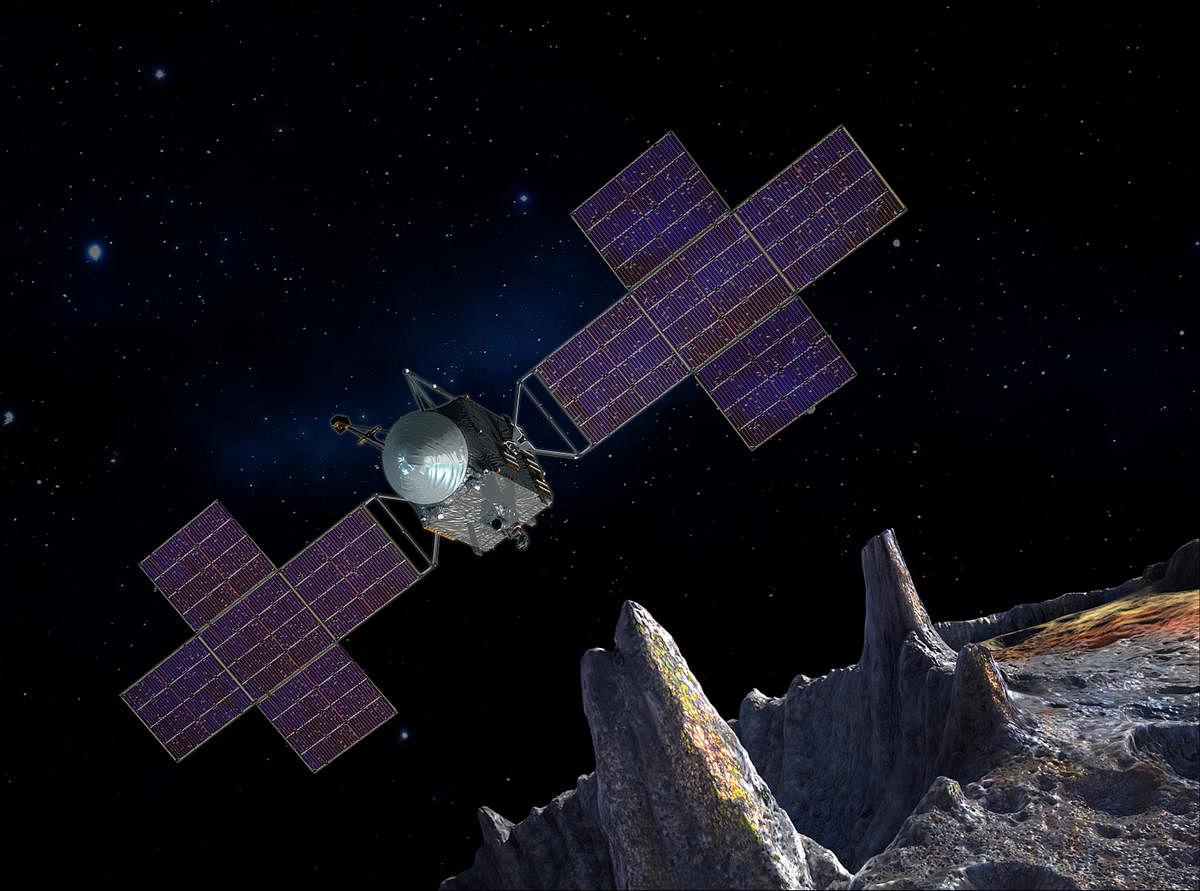
The space race is about to morph into an unprecedented gold rush. Spotting an asteroid fabulously packed with gold and precious heavy metals worth a mind-boggling $10 quintillion, the National Aeronautics and Space Agency (NASA) has planned a mission kicking off in 2022.
Virtually up for grabs, the asteroid, Psyche 16, has been caught glittering between Mars and Jupiter. Now, if NASA succeeds and sparks a mining space race, the eye-popping quantities of gold, iron and nickel could make everyone on earth a billionaire.
For the American space agency, what caught its attention about Psyche 16 was the asteroid’s unearthly composition. At first sight, NASA gathered that it was an exposed nickel-iron core of an early planet, “one of the building blocks of our solar system”.
Besides gold, the asteroid also has platinum in plenty.
Space buffs worldwide were gushing that the asteroid could end up crippling the earth’s gold industry, rekindling global economy and banishing poverty forever.
For Indians forever hooked to ‘Akshaya tritiya’ gold purchases to spark prosperity and eternal growth, the asteroid might just be the game-changer. For gold-miners worldwide, faced with depleting natural resources on planet earth, the current output of about 4-5 million ounces of gold per year will just not compare with what’s in store.
But wait, the asteroid will not be mined in a hurry. Once NASA launches its mission in 2022, it would orbit Psyche 16 for years, studying it from a distance before making that golden plunge. The mission’s solar electric cruise will last 3.5 years, arriving at Psyche in 2026.
Early planet?
Beyond the glitter, NASA scientists are more interested in a fascinating possibility: That Psyche 16 could be the exposed core of an early planet as large as Mars that lost its rocky outer layers through violent collisions billions of years ago.
If this were so, “it would provide a unique look into the solar system’s distant past, when the kind of high-speed protoplanet encounters that created earth and the other terrestrial planets were common,” the NASA said on its website.
The asteroid study, by implication, could then tell how exactly our own earth’s core and the cores of other planets were formed.